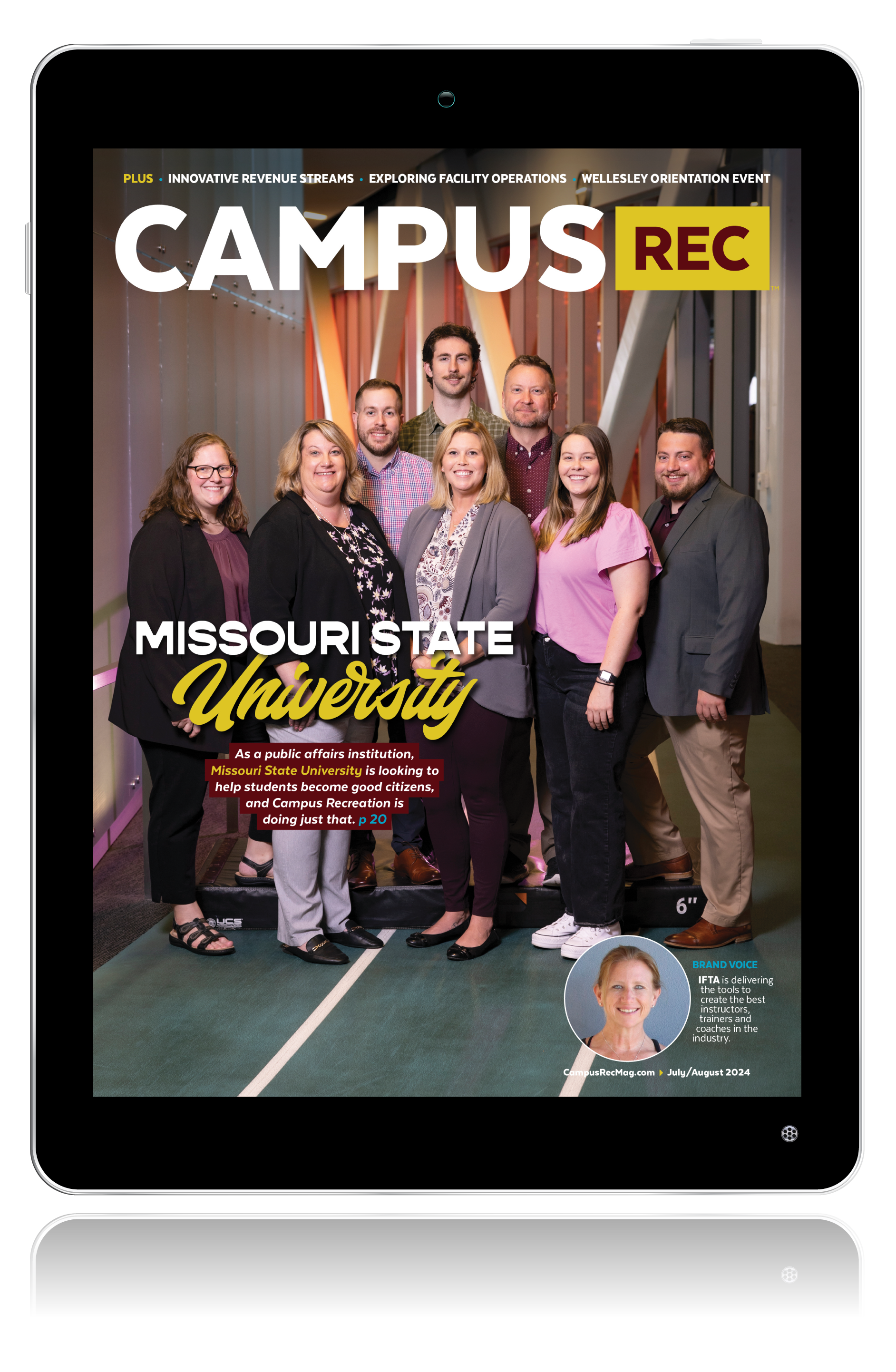Last time, we discussed how remote work and open offices can benefit your campus recreation department. In Part Two of this three part series, you’ll learn how increased technology and automation systems are in the office of the future.
Increased Technology and Automation Systems
More and more web-based and cloud-based programs are being created daily to help us do our jobs more effectively. Free programs such as Slack, Trello, Canva and Asana are a way to eliminate interoffice email to promote productive work. Here are two ways to implement technology and automation in your department.
Determine how and when you will communicate.
Email is no longer an effective means of communication for the inside of an office. In the past, email has been a catch-all solution for communication, notices, tasks, project management and socializing. When utilizing email as a crutch to intraoffice needs, we increase the number of messages that flood our inboxes, therefore causing unnecessary stress and pressure to find time to dig out and maintain appropriate communication. It is important to trial which methods work for your department and set guidelines on how streamlined communication should be handled. Below you will find a sample structure of tools and how they are utilized.
- Slack: Slack is used for interoffice communication. Channels can be created for workgroups and notices can be sent out by leadership. Schedule a daily or weekly time for team members to communicate 1) any “wins” from the previous day/week, 2) what their main goals are for the day/week, and 3) what you need from your team this day/week or how you can be reached this week. Slack is not for task assigning.
- Trello: Trello is used for task assigning and project management. Each team member can have a list and tasks/projects can be utilized as cards. Cards can include attachments, checklists, labels and due dates, and can be shifted from team member to team member until task/project completion.
- Voxer: Voxer is a voice messaging system that can be used when it’s more appropriate to speak than to type a message, but not essential enough for a phone call.
- Phone Calls: Phone calls are used when a more in-depth discussion is needed.
- Emails: Emails are a last resort.
Create effective automation solutions.
The goal for automation is to be more effective in your practice; it’s a process of cutting out the unnecessary and then creating systems to automate processes to allow you to shift your priorities around. Automation and technology can be utilized for both internal and external processes.
- Internal Automation: Internal automation is key when managing your schedule and operational procedures. Think about the amount of time you go back and forth with others trying to schedule a meeting. Use solutions that allow others to see availability and book phone calls or meetings with you. These solutions often come with reminders that notify all parties for an upcoming appointment with details on how to log into or prepare for the meeting. Try taking a pulse on your team to see what they are spending the majority of their time doing and if those projects or tasks can be automated. For example, creating spreadsheets and reports can be tedious and time-consuming; however, if you find solutions that take your data and generate graphs and tables automatically with accessibility for all stakeholders, then you can save time and energy.
- External Automation: Take an initial assessment of your department’s operational procedures. Look for services and tasks that can be streamlined and automated and search for missed opportunities for engagement. For example, do you have a process in place to follow up with someone who uses a guest pass, shows interest in personal training, or stops by a tabling event? Campus recreation departments can benefit from Customer Relationship Management (CRM) programs to follow up with these potential leads. Take time to map out what your member service journey looks like from pre-service through post-service. Have your emails, texts and messages scripted so you can make contact with the member as soon as possible. Always remember to add a personal touch to the message such as mentioning how and when you met the person or providing information about a specific program that showed interest prior to sending. Using programs that track engagement activity, such as how many times a member is opening a message or clicking on links, gets you a clearer picture of what programs and events are getting the most reach.
Considering all of your opportunities can be overwhelming. Find out what are your most critical pain points to solve and start there; even small changes can make the biggest impact. Stay tuned to Part Three; it’s all about rethinking your organizational chart.










